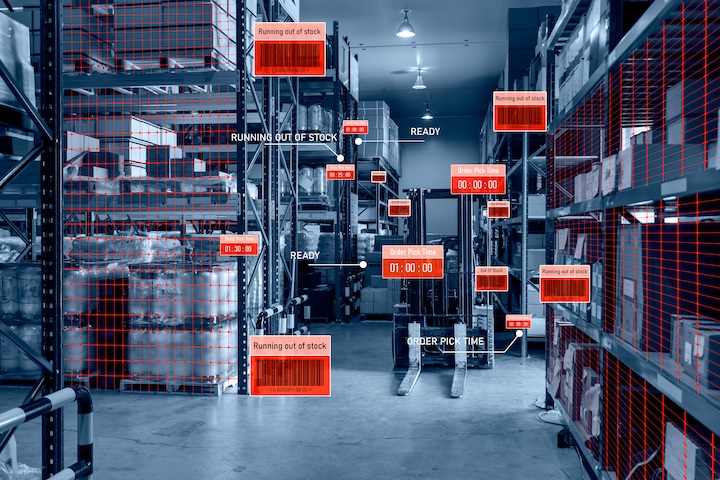The industrial supply chain is undergoing significant changes, as companies deal with longer lead times, labour shortages, low industrial vacancy rates, and increasing customer demand.
In 2023 and beyond, it’s clear that the same processes that were working before, are not always going to be good enough to meet the challenges of tomorrow. Companies that focus on convenience, efficiency, and adaptability will come out on top.
But what trends are shaping the industrial supply chain, and affecting the way the logistics and warehousing industries work?
From just in time to just in case
With supply chains being stretched, and longer lead times becoming increasingly common across all industries, companies are looking to bring more inventory into the country to futureproof themselves against shortages.
Instead of the highly efficient “just in time” systems, where parts or goods were replenished on an as-needed basis, companies are now bringing in additional stock, just in case it can’t come quickly further down the line.
Industrial parts are being held for longer times, as equipment ages and maintenance and spare parts agreements still need to be honoured.

From POS to RDC or NDC: transforming the way industries source and store parts
With more parts needing to be stored in-country, and very low industrial vacancy rates (as low as 0.4 per cent in Sydney and 0.8 per cent Australia-wide last year, according to The Property Tribune and a similar story in New Zealand with 0.7 per cent in Auckland and 1.8 per cent in Wellington, according to JLL), it’s natural that companies are looking at ways to use economies of scale to save costs.
Many are moving away from a point-of-sale (POS) approach, and rationalising a move to distribution centres – either Regional Distribution Centres (RDCs) or National Distribution Centres (NDCs) to take advantage of larger scale storage and the associated cost savings of having fewer storage facilities.
Consumer convenience
On the consumer side, while convenience will always be important, there has been a distinct shift away from wanting ultra-fast deliveries, such as those within three-hour windows. What’s more important to consumers now is that companies deliver when they say they will, even if that’s a bit longer.
Same day will continue to be important for many industries, but faster times are less in demand than pre-Covid times. To help companies continue to fulfil same-day orders, many are opting to bring storage and fulfilment closer to the main population centres, and utilising Micro-Fulfilment Centres (MFCs).
Evolving nature of warehouses
With labour shortages continuing to be an issue in manufacturing and distribution, automated warehouses are one way that companies can keep up with consumer demand.
And, with industrial land becoming increasingly scarce and more expensive, many companies are looking into multi-level automated warehouses to optimise the utilisation of their existing industrial space.
For industrial customers, the convenience of part pick-up is top of mind, so click-and-collect parcel lockers are likely to form part of the solution moving forward, after their success with consumer applications.
Conclusion
The industrial supply chain is facing a number of challenges and changes that require companies to be more flexible and innovative. By embracing trends like multi-level warehouses, rationalisation of distribution facilities, bringing inventory in-country, and utilising MFCs, companies can meet the needs of customers, overcome labour shortages, and stay ahead in a rapidly evolving market.
Whether it’s through delivering on time, increasing convenience, or optimising storage space, companies that adapt to the latest trends in the industrial supply chain will be better positioned to succeed this year and beyond.
For more information, please visit the Swisslog website.
- About the author: Dan Ulmamei is MD at Swisslog Australia and New Zealand and has more than 26 years of experience in logistics automation, most of it in various leadership roles, ultimately managing teams engaged in operations around the globe. He has been working in similar positions in the industry in Sydney since 2016.






